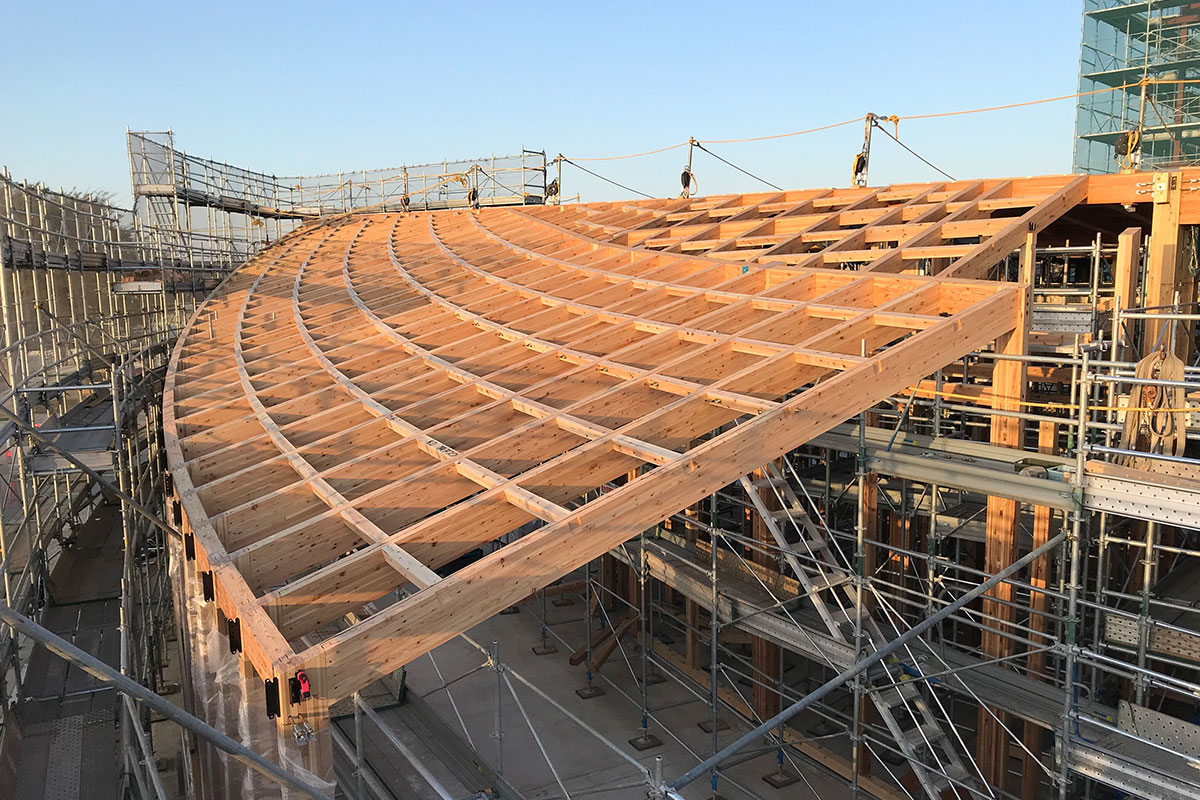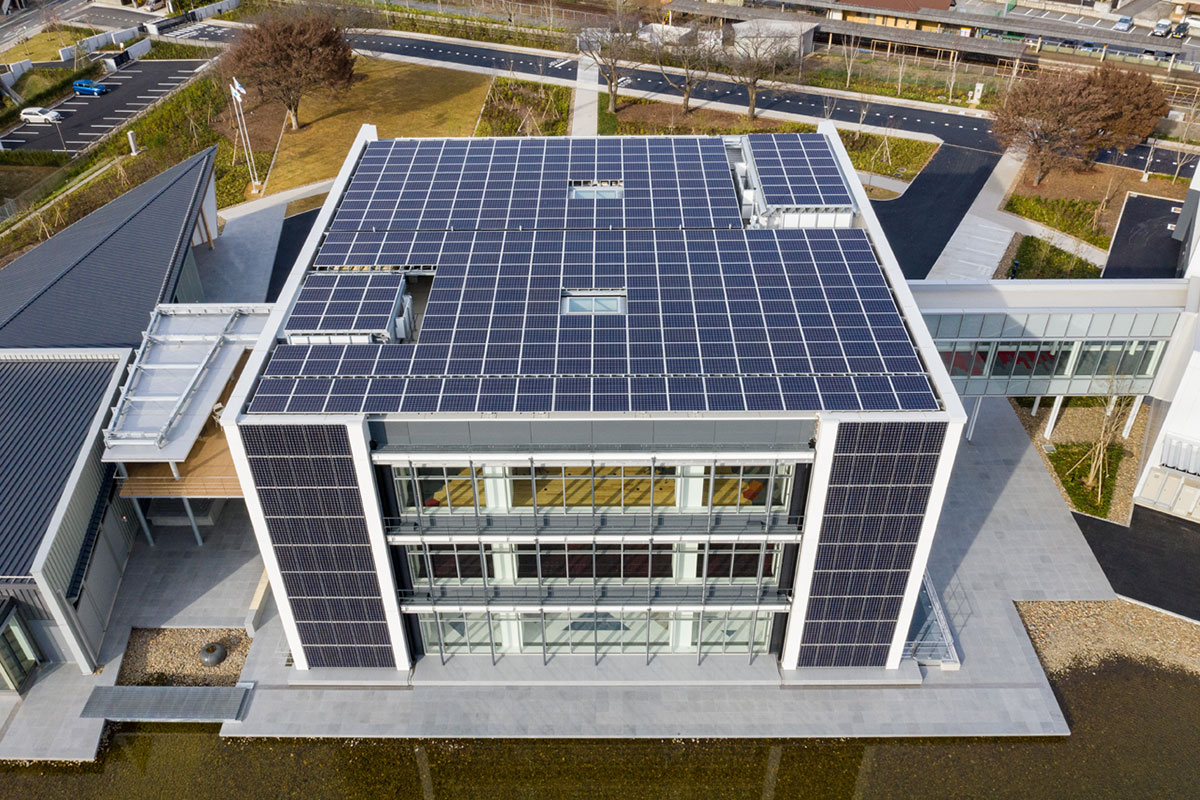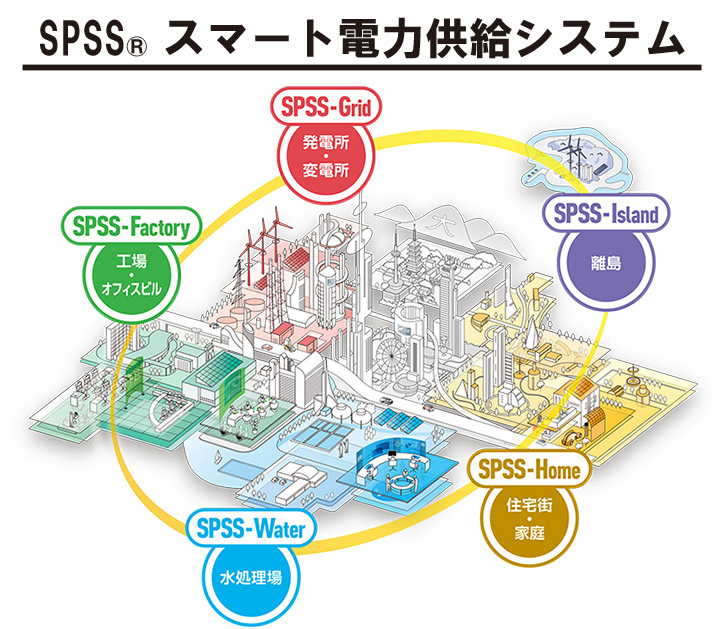Wood resource comprehensive use project by using as a core a new production system for wooden construction (wooden multi-axis processor)
MAEDA CORPORATION
Outline
The promotion of wooden buildings in public buildings in recent years has boosted the demand for wood for large-scale wooden buildings. However, since it is difficult for a precutting processor, which has been used by the housing industry so far, to process wood for large-scale wooden buildings, they have to rely on an overseas large precutting processor. Nevertheless, a small and medium-sized enterprise cannot afford to buy it because of its high price. Our company considers that a bottleneck in widely spreading large-scale wooden buildings is human resources, construction know-how, log processing technology, and eventually a forest (forest management,) which is in the upper stream.
One of the important elements of "wood resource comprehensive use," which is a project, making the best use of forest resources in Japan and thoroughly conveying the worth of wood to society from a forest (which is the upper stream of wood circulation) to a building in the town (which is the lower stream,) is this "new production system for wooden construction."
The wood resource comprehensive use project contributes to the realization of the resilience of the national land by forestry management and the Net Zero based on promotion (CO2 reduction of materials) of Japanese wooden buildings.
Description
Our company, which celebrated its 100th anniversary in business in January 2019, is aiming at a "comprehensive infrastructure service company" towards the next 100 years and working on the innovation of various society's infrastructure systems.
In recent years, many companies and organizations are promoting projects bearing in mind contributing to the achievement of SDGs to realize a sustainable society. Our company recognizes that, as a constructor, the efforts, such as Goal 11 (town planning enabling keeping living,) Goal 12 (responsibility to make and responsibility to use), and Goal 13 (concrete measures against climate change,) are indispensable.
Under such circumstances, not limiting the use of wood to construction, our company thinks that a series of circulation of "cutting, using, planting, and growing" trees being performed with the economic activities or the "sustainable forest circulation," is the figure of the use of wood to be achieved. Based on the view, we regard it as a "wood resource comprehensive use project" and are promoting activities.
Our company considers that through this wood resource comprehensive use project, we can contribute to the realization of resilience and the Net Zero based on the following two points in addition to the goal achievement mentioned above:
1. Prevention of disasters, etc. by the activation of forest management
2. Increase in the amount of CO2 absorption based on the promotion of the lignification of construction and large-scale wooden buildings
When forest management is activated based on sustainable forest circulation, and forests come to be managed appropriately, a water source recharge function is shown fully. As a result, resilience, such as relief of flood, prevention of landslide, and stability of the river flow, are improved.
Also, in promoting the lignification of construction and large-scale wooden buildings, as opposed to RC buildings and S buildings, which emit CO2 during manufacture, it is important that a component itself must store carbon, and the sources of CO2 absorption by forests are preserved. The Paris Agreement requires reducing CO2 by 25% (from FY 2013) by 2030. Among forest, soil, and ocean, which are the main three sources of carbon dioxide absorption, only a forest can increase this amount of absorption by efforts.
As the actual condition of Japanese timber, cedar and Japanese cypress, which account for about 70% of artificial forests, are now in a suitable age as material. These trees, which already have become mature trees, have fewer amounts of CO2 absorption than younger trees in a growth stage. Therefore, we think that positively cutting down and using mature trees of cedar and Japanese cypress and planting the young trees to be used as next-generation resources lead to an increase in the amount of CO2 absorption.
In conjunction with the increase in large-scale wooden buildings, we need to improve the technologies for large-scale wooden buildings, accumulate know-how, and face the development of the technologies to use it. When considering it from the perspective of wood resource comprehensive use, a bottleneck in spreading large-scale wooden buildings is log processing.
Precutting processing technology has been used in most member processing in the field of the housing industry so far. However, this technology is challenging to respond to large-scale wooden buildings. For that reason, the housing industry has to rely on processors made overseas at present. However, since they are expensive and a large scale, the issues can be seen that small and medium-sized enterprises cannot buy them easily.
What has been developed jointly with the Chiba University Graduate School of Engineering, Faculty of Engineering (Hirasawa Research Laboratory) focusing on this log processing technology is this "new production system for wooden construction" with a wooden multi-axis processor.
The multi-axis processor is a precutting processor equipped with two or more axes literally and cuts wood with a blade equipped at the tip of an arm.
The appeal of this new production system for wooden construction is summarized in the following two major points:
1. Cooperation of BIM and robotics
2. Realization of artificial skill by a robot craftsman
See photograph 1 (right.)
This is a part of the beams and pillars of the ICI Lab Nest of the ICI general center (Toride-shi, Ibaraki Prefecture) of our company. The Nest is the first authentic wooden design-and-build matter for our company singly, and a joint, a size, etc. are all different for every member in realizing the design of a roof with an inclination spreading radially. A part of these beams and pillars were processed using the new production system for wooden construction.
Also, photograph 2 (below) is similarly a framework of the Fukuiraptor installed in the ICI Lab Nest. All the frameworks used for this were cut down by the new production system for wooden construction. It is difficult to cut down the members with these kinds and complicated curved surfaces by human power for a short period. However, as a result of having used the multi-axis processor, the manufacturing period was approximately four months. Also, although this project was divided work between a remote place and two bases, manufacturing based on smooth cooperation was realized by building and using an information-sharing system. In this way, the new production system for wooden construction has great advantages of not only log processing for large-scale wooden buildings but also enabling highly precise processing by using BIM (Building Modeling Information) data and enabling producing the same thing in large quantities repeatedly if only there are exact 3D data, i.e., enabling multi kind and mass production. It is also possible to hand down to the future Japanese traditional techniques (such as a transom window and decorative carving of Buddhist temples and Shinto shrines,) which is decreasing, by using BIM data.
This system is an epoch-making attempt, which has broken a barrier of log processing so far and has remade it in Japan from the beginning. A robot arm is equipped with a blade, and a 3D shape is cut automatically according to BIM data. Since the cooperation of two or more robots and the automatic switch of a tool are possible, it becomes unnecessary to make a worker intervene in the middle of work, such as reversing a component, and productivity is improved.
Also, since the robot arm of this system is very compact with 560 kg in unit weight and 2,050 mm in maximum reach, the introduction of this system to a small and medium-sized processing plant is considered to be possible.
The new production system for wooden construction is already in the last experimental stage for practical use. By this system being implemented in society, i.e., used at a precutting factory, it helps not only to match the material supply from a forest, which is the upper part of the river, and market needs smoothly but also to improve efficiency and safety in log processing, eventually to improve large-scale wooden building constructions. After starting the implementation of this system in society in the stage of "using" in the sustainable forest circulation, our company is developing a vision that we will be multilaterally involved in the building of a society in which the value of trees is correctly evaluated, and a society in which the counter value corresponding to the value is returned to a forest, i.e., town planning, with the partners in each stage, while being involved in each stage of "planting," "growing," and "cutting" as a project.
It can be said that the "wood resource comprehensive use project" maximizing the value of wood is one of the important efforts in our company aiming at a comprehensive infrastructure service company.
(Next page: Conceptual diagram of sustainable forest circulation)
Partner(s)
Graduate School of Engineering, Faculty of Engineering (Hirasawa Research Laboratory)
http://www.hlab-arch.jp/
Supplementary information
Maeda Corporation × Woods “Let’s build with woods”
https://kidetatetemiyou.com/
Other Innovation Challenges
Challenge toward social implementation of sophisticated ZEB
MAEDA CORPORATION
Similar Innovation Challenges
Achieving net zero carbon emissions from paint finishing processes
Taikisha Ltd.
Activities for reducing GHG of business operations in Nissin Electric Group
Nissin Electric Co., Ltd.











-1人工光合成技術.jpg?id=2&tid=759&imageNumber=1)